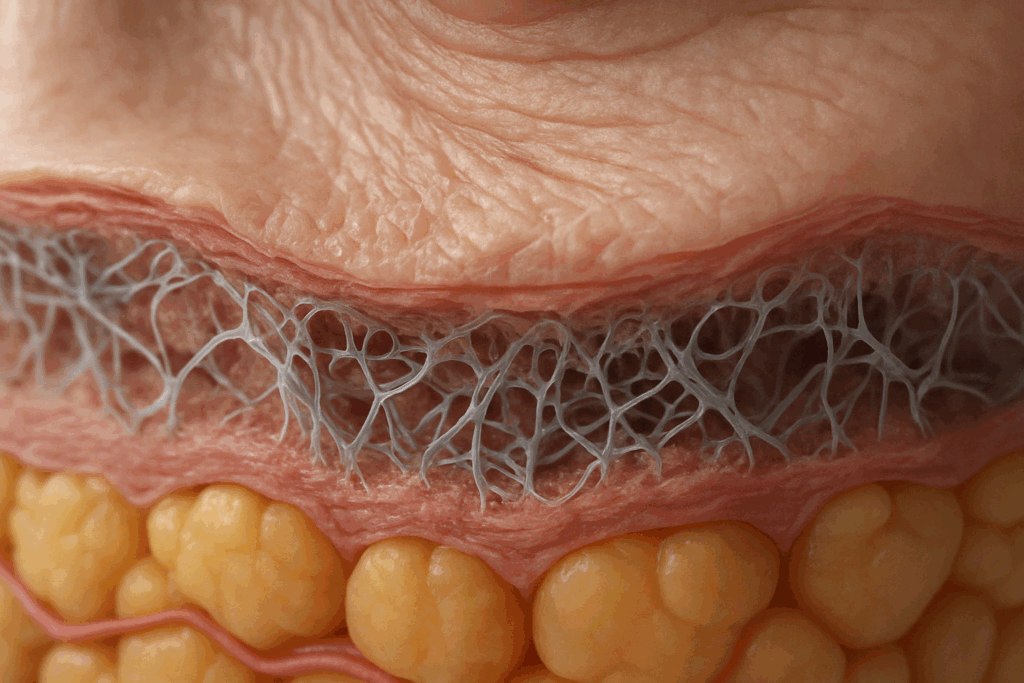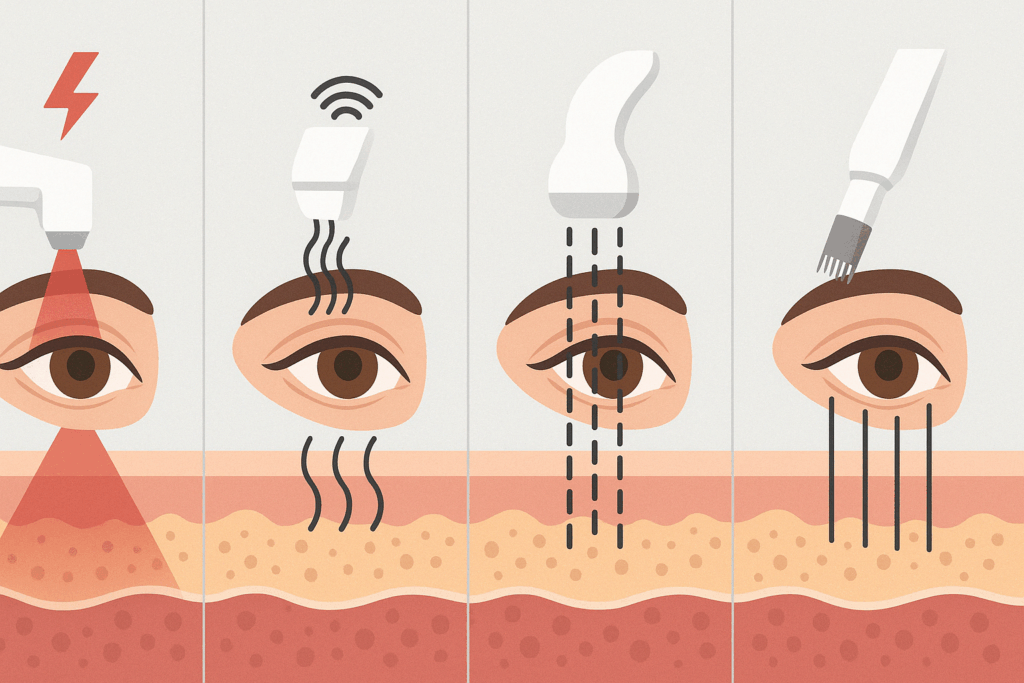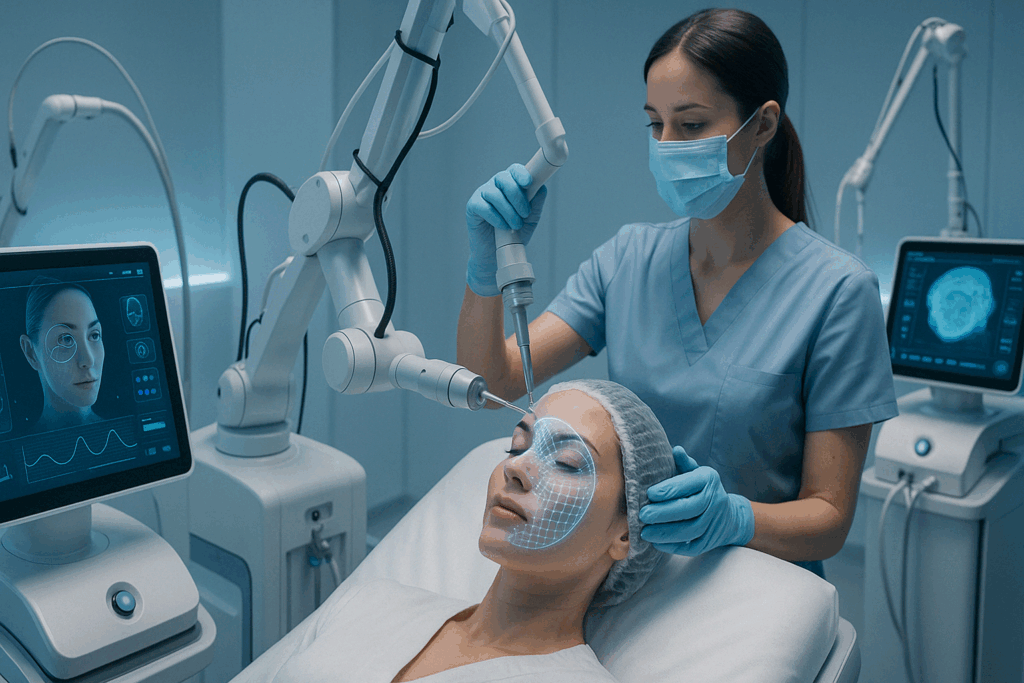For many, the delicate skin under the eyes becomes a focal point of concern as early signs of aging emerge. This area is particularly prone to sagging, fine lines, and wrinkles due to its thinness and constant movement from facial expressions. With an increasing interest in non-invasive and effective aesthetic procedures, laser treatments have become a preferred solution for those looking to rejuvenate and tighten under-eye skin without resorting to surgical interventions. In this comprehensive guide, we will explore the best laser treatments to tighten under eye skin, focusing on what truly works for wrinkles and sagging around the eyes. We will also evaluate how these treatments align with modern wellness goals and mental health considerations, making the information especially relevant for a health-conscious, well-educated audience.
You may also like: How to Choose Skin Care for Fine Lines: Evidence-Based Tips for Healthier, Younger-Looking Skin

Understanding the Causes of Under-Eye Wrinkles and Sagging
Before diving into treatment options, it is essential to understand why the under-eye area is so vulnerable to aging. The skin here is among the thinnest on the body, making it more susceptible to the breakdown of collagen and elastin. These structural proteins are vital for skin elasticity and firmness. As we age, the natural production of collagen declines, leading to visible wrinkles and laxity. Environmental factors such as sun exposure, pollution, and poor skincare routines can exacerbate this process. Genetics also play a significant role, with some individuals experiencing earlier or more pronounced under-eye aging than others.
In addition to biological aging, lifestyle choices can dramatically influence the condition of the skin around the eyes. Smoking, poor nutrition, and lack of sleep can accelerate the breakdown of collagen, while chronic stress can exacerbate inflammation, further contributing to skin deterioration. Repetitive facial movements, such as squinting or frowning, may deepen expression lines, making laser for wrinkles under eyes an increasingly attractive option for long-term skin health.

How Laser Technology Targets Wrinkles and Skin Laxity
Laser treatments work by delivering concentrated beams of light energy to the skin, stimulating the body’s natural healing processes. Different types of lasers penetrate the skin at various depths to target specific issues. For example, ablative lasers remove the outer layers of skin, promoting regeneration and new collagen formation, while non-ablative lasers work beneath the skin’s surface to stimulate collagen without damaging the top layer. The right laser under eyes can dramatically improve skin texture, tone, and tightness.
Fractional lasers, often used for delicate areas like under the eyes, create micro-injuries in the skin that promote healing and renewal. These lasers can treat both fine lines and deeper wrinkles by increasing dermal collagen density. The process is generally well-tolerated and provides noticeable results with minimal downtime, making it one of the best laser to tighten under eye skin for individuals seeking non-surgical solutions.

Choosing the Best Laser for Under Eye Rejuvenation
Among the various types of laser treatments available, certain technologies stand out for their effectiveness in treating under-eye concerns. Fractional CO2 lasers, for instance, are widely regarded as the gold standard for skin resurfacing. They deliver dramatic improvements in skin texture and elasticity by removing damaged skin and encouraging new cell growth. However, due to their intensity, they require a longer recovery period, making them best suited for patients who can accommodate some downtime.
Erbium lasers, another popular option, offer a gentler approach with less thermal damage to surrounding tissues. This makes them ideal for individuals with sensitive skin or those who prefer a faster recovery time. Non-ablative lasers, such as Nd:YAG or pulsed dye lasers, provide subtler results over a series of treatments but are excellent for ongoing maintenance and prevention. Each of these modalities can be tailored to individual skin types and treatment goals, ensuring that patients receive the best laser for under eye rejuvenation based on their unique needs.
What to Expect During and After Laser Treatments
A common concern among patients considering laser therapy is the procedure’s safety and potential side effects. Fortunately, when administered by qualified dermatologists or cosmetic physicians, laser treatments are generally safe and effective. During the procedure, patients may feel a warming sensation or mild discomfort, which is typically managed with topical anesthetics. The duration of the treatment depends on the laser type and the extent of the area being treated but often lasts between 15 and 45 minutes.
Post-treatment care is critical for optimal outcomes. Patients may experience redness, swelling, or a sensation similar to sunburn, especially with more aggressive lasers like fractional CO2. These symptoms usually subside within a few days to a week. Adhering to aftercare instructions—such as avoiding sun exposure, using gentle moisturizers, and following prescribed skincare routines—can enhance healing and prevent complications. For many, the ability of laser for wrinkles around eyes to deliver visible, lasting results outweighs the short-term inconvenience of post-treatment sensitivity.

Comparing Laser Treatments to Other Skin Tightening Methods
While laser technology offers numerous advantages, it is not the only method available for addressing under-eye aging. Other non-invasive treatments include radiofrequency (RF) therapy, ultrasound therapy, and microneedling with radiofrequency. These modalities also stimulate collagen production but use different energy sources. For example, RF therapy uses electromagnetic waves to heat the skin, encouraging tissue remodeling. Ultrasound therapy, such as Ultherapy, reaches deeper layers of the skin to lift and tighten without surface damage.
These alternatives may be preferable for individuals who are not candidates for laser treatments due to skin tone, sensitivity, or medical history. However, lasers remain the preferred choice for many because they can be precisely calibrated and adjusted to suit various skin types and conditions. For patients focused on dramatic improvement in skin firmness, the option to tighten skin under eyes with laser remains one of the most effective and evidence-based approaches available.

Laser Treatments and Mental Wellness: The Psychological Benefits of Skin Rejuvenation
The impact of under-eye aging is not limited to physical appearance; it often extends into emotional and psychological domains. Studies have shown that dissatisfaction with facial aesthetics can lead to decreased self-esteem, social anxiety, and even symptoms of depression. The eyes are central to facial expression and non-verbal communication, and their appearance can significantly influence perceived age and vitality. Addressing cosmetic concerns in this area can therefore have profound effects on overall mental wellness.
Many individuals who undergo laser under eyes treatments report increased confidence and a more positive self-image following their procedures. This is particularly relevant in a society that places high value on youth and appearance, often linking physical attractiveness to professional and social success. While cosmetic interventions should never be seen as a cure-all for psychological distress, they can serve as meaningful components of a holistic approach to well-being when used thoughtfully and responsibly.
The Role of Skincare in Supporting Laser Treatment Results
To maximize the benefits of laser treatments, it is crucial to adopt a skincare routine that supports skin healing and collagen regeneration. Products containing ingredients like hyaluronic acid, peptides, vitamin C, and retinoids can help maintain and prolong the results achieved through laser therapy. These agents work synergistically with the body’s healing mechanisms to reinforce the skin barrier, reduce inflammation, and prevent future damage.
Hydration and sun protection are especially important in the weeks following a laser procedure. The newly treated skin is more susceptible to UV damage, which can compromise results and increase the risk of hyperpigmentation. Broad-spectrum sunscreen with SPF 30 or higher should be applied daily, and physical sun protection, such as hats or sunglasses, is also recommended. When used consistently, these simple practices can significantly enhance the long-term effectiveness of even the best laser to tighten under eye skin.
Who Is an Ideal Candidate for Laser Under-Eye Treatments?
Not every individual is an ideal candidate for laser treatments under the eyes. The best outcomes are typically observed in patients with mild to moderate skin laxity, early signs of wrinkles, and realistic expectations. Those with darker skin tones should consult with providers experienced in treating diverse skin types to minimize the risk of post-inflammatory hyperpigmentation. Conditions such as active eczema, psoriasis, or rosacea may contraindicate certain lasers, as these conditions can increase sensitivity and the potential for adverse reactions.
A thorough consultation with a board-certified dermatologist or facial aesthetic specialist is essential for determining candidacy. This evaluation includes a skin assessment, medical history review, and discussion of treatment goals. A personalized plan can then be crafted to ensure safety, efficacy, and alignment with the patient’s aesthetic preferences. Informed patients who understand the nuances of laser technology are more likely to achieve satisfying outcomes and maintain results with proper follow-up care.
Cost Considerations and Long-Term Value of Laser Treatments
One of the most frequent questions surrounding aesthetic procedures is the cost involved. The price of laser for wrinkles under eyes varies based on the type of laser used, the provider’s expertise, geographic location, and the number of sessions required. On average, patients can expect to pay between $500 and $2,500 per treatment session. While this may seem costly upfront, many patients view it as a worthwhile investment due to the durability of results and the avoidance of surgical risks.
From a long-term perspective, laser treatments often prove more cost-effective than repeated injections or topical treatments that offer only temporary results. Additionally, the ability to tighten skin under eyes with laser can delay or reduce the need for more invasive interventions later in life. When considered in this light, the procedure becomes not just a cosmetic upgrade but a proactive measure for maintaining youthful appearance and emotional well-being.
How to Choose the Right Provider for Laser Eye Rejuvenation
Selecting the right practitioner is a critical step in ensuring safe and successful outcomes with laser treatments. Credentials, experience, and specialization in cosmetic dermatology or plastic surgery are essential factors to evaluate. Providers should be transparent about the risks, benefits, and realistic outcomes of each procedure. A comprehensive consultation that includes a discussion of the patient’s skin concerns, desired results, and lifestyle factors is a hallmark of ethical and high-quality care.
Patient reviews, before-and-after galleries, and board certifications can also provide insight into a provider’s expertise. Avoiding bargain procedures or unlicensed facilities is paramount, as improperly performed laser treatments can lead to burns, scarring, or pigment changes. Trustworthiness and professionalism should be at the forefront of any patient-provider relationship, especially when dealing with such a delicate and visible area as the under eyes.

The Future of Laser Technology in Eye Rejuvenation
Advances in laser technology continue to push the boundaries of what is possible in non-invasive cosmetic treatments. Newer devices offer enhanced precision, faster recovery times, and customizable settings to suit diverse skin tones and conditions. Combination therapies that integrate laser with microneedling, PRP (platelet-rich plasma), or exosome treatments are also gaining popularity for their synergistic effects. As our understanding of skin aging deepens, so too does the ability to develop treatments that not only reverse visible damage but also promote long-term skin health.
For patients exploring their options, staying informed about these developments is key to making empowered choices. A laser under eyes today may differ significantly in design and efficacy from those used even five years ago. Partnering with a knowledgeable provider who stays current with evolving technologies ensures that patients benefit from the most advanced and effective treatments available.
Frequently Asked Questions: Laser Treatments for Under-Eye Wrinkles and Skin Tightening
1. Can laser treatments improve both puffiness and wrinkles under the eyes at the same time?
Yes, certain laser technologies can target multiple concerns such as puffiness and fine lines in a single session, depending on the underlying cause. Puffiness is often related to fluid retention, fat herniation, or skin laxity, and while laser for wrinkles under eyes primarily improves skin texture and elasticity, some non-ablative and fractional lasers can help stimulate lymphatic drainage and collagen remodeling. This dual effect can subtly reduce the appearance of under-eye bags while simultaneously tightening the skin. However, in cases of severe fat pad prolapse, lasers may be less effective and surgical options might be more appropriate. It’s important to match the laser under eyes to the anatomical cause of puffiness for optimal outcomes.
2. How does the recovery time vary between different types of under-eye laser treatments?
Recovery time varies significantly depending on whether the laser is ablative or non-ablative. For example, a fractional CO2 laser—the best laser to tighten under eye skin for dramatic results—may require up to ten days of downtime, during which redness, peeling, and swelling are expected. In contrast, non-ablative lasers like the Nd:YAG allow patients to return to daily activities within a day or two, though multiple sessions may be required. Patients looking for minimal disruption might favor lighter resurfacing options, even if it means slower progress. The trade-off between recovery time and intensity of results should be discussed thoroughly with your provider.
3. Are there lifestyle changes that can enhance the results of laser for wrinkles around eyes?
Absolutely. While laser treatments provide structural improvements to the skin, maintaining results requires an integrative approach. Daily use of broad-spectrum sunscreen is critical, as UV exposure can quickly reverse the collagen-stimulating effects of even the best laser for under eye rejuvenation. Adequate hydration, a diet rich in antioxidants, and consistent sleep patterns help sustain skin elasticity and reduce inflammation. Avoiding smoking and limiting alcohol intake also preserves skin health and improves healing. These lifestyle choices amplify the long-term benefits of laser for wrinkles around eyes.
4. Is laser treatment under the eyes safe for individuals with darker skin tones?
Historically, patients with deeper skin tones faced higher risks of post-inflammatory hyperpigmentation from laser procedures. However, newer technologies have greatly improved safety and outcomes across all skin types. Choosing a provider with expertise in skin-of-color dermatology is essential when considering laser under eyes. Non-ablative fractional lasers and longer-wavelength devices, such as Nd:YAG, are safer options that deliver consistent results with minimized risk of pigmentary complications. As always, a customized approach is key, and a test patch may be recommended before full treatment.
5. How does laser therapy compare to dermal fillers for under-eye rejuvenation?
Dermal fillers and lasers offer different mechanisms of action and benefits, and in many cases, they can complement one another. Fillers restore volume and correct hollowing, whereas laser for wrinkles under eyes targets surface texture and skin laxity. For patients with both fine lines and volume loss, a combined approach often yields superior aesthetic outcomes. However, using fillers inappropriately can lead to puffiness or Tyndall effect (a bluish discoloration), particularly under thin skin. For individuals prioritizing natural collagen production and skin tightening, lasers may be the better standalone option.
6. Can laser treatments help prevent future wrinkles if started early?
Yes, preemptive laser treatments can play a proactive role in skin aging prevention. Initiating laser under eyes in the late twenties or early thirties can stimulate collagen production and delay the onset of visible fine lines. Non-ablative treatments in particular are effective for maintenance and prevention, offering subtle but cumulative improvements with minimal downtime. Think of it as a long-term skin investment—the earlier you begin supporting your skin’s structural integrity, the less correction you may need in the future. Preventative use also means that fewer sessions may be needed later to achieve the same level of rejuvenation.
7. What should I look for when selecting the best laser to tighten under eye skin?
When evaluating the best laser to tighten under eye skin, consider factors such as skin type, sensitivity, desired downtime, and whether you have underlying medical conditions. Fractional CO2 remains one of the most effective for deep rejuvenation, but it’s not suitable for everyone due to its aggressive nature. Erbium and non-ablative fractional lasers are gentler and more suitable for maintenance or sensitive skin. It’s also crucial that your provider offers a full spectrum of devices and can tailor the treatment plan accordingly. Don’t hesitate to ask how frequently the provider performs under-eye procedures and whether they have before-and-after photos specific to this area.
8. How long do the results of laser treatments under the eyes typically last?
The longevity of laser results varies depending on the type of laser used, individual skin quality, and post-treatment care. In general, more intensive procedures like fractional ablative laser for wrinkles around eyes can deliver results lasting two to five years, especially when maintained with annual touch-ups. Non-ablative lasers may require ongoing sessions every six to twelve months to preserve results. Environmental exposure, stress, and hormonal fluctuations can also influence durability. With proper skincare and sun protection, many patients enjoy a refreshed under-eye appearance well beyond the first year.
9. Are there emerging technologies in laser for under eye rejuvenation to watch for?
Yes, the field of laser aesthetics is advancing rapidly, with emerging tools offering more refined and individualized results. Developments such as picosecond lasers, which use ultra-short pulses to stimulate collagen with minimal heat, show promise for under-eye treatment with virtually no downtime. Additionally, hybrid lasers that combine ablative and non-ablative wavelengths in a single pass are gaining popularity for their balance of efficacy and safety. These innovations expand the options for patients who previously didn’t tolerate traditional resurfacing well. Staying informed about the latest techniques ensures you receive the best laser for under eye treatments tailored to evolving best practices.
10. Can emotional or psychological benefits from laser treatments extend beyond physical appearance?
Yes, the psychological benefits of laser for wrinkles under eyes often extend well beyond the physical improvements. Many individuals experience increased confidence, reduced social anxiety, and a greater willingness to engage in personal and professional settings post-treatment. For those who have struggled with self-perception tied to looking tired or aged, restoring a smoother under-eye area can be deeply affirming. These effects are not superficial; they reflect the significant interplay between self-image and emotional health. While no cosmetic treatment replaces deeper psychological work, the emotional lift that comes from looking more refreshed can be a valuable part of holistic wellness..
Final Thoughts: Choosing the Best Laser to Tighten Under Eye Skin for Lasting Rejuvenation
Rejuvenating the under-eye area requires both scientific precision and artistic sensibility. With the right technology, expert guidance, and a commitment to aftercare, laser treatments can yield transformative results. Whether you are addressing early signs of aging or seeking to correct more advanced skin laxity, choosing the best laser to tighten under eye skin can make a significant difference in both appearance and confidence. By integrating clinical expertise with a holistic understanding of wellness, these treatments serve not only aesthetic goals but also broader mental health and self-esteem.
As interest in non-invasive skin rejuvenation continues to grow, the conversation around laser for wrinkles around eyes has become more nuanced and evidence-driven. For those seeking a trusted, effective, and medically sound approach to under-eye rejuvenation, the science behind laser therapies offers a compelling path forward—one that respects both the outer beauty and the inner well-being of each individual.
Further Reading:
Tighten Loose Sagging Skin Under Eyes